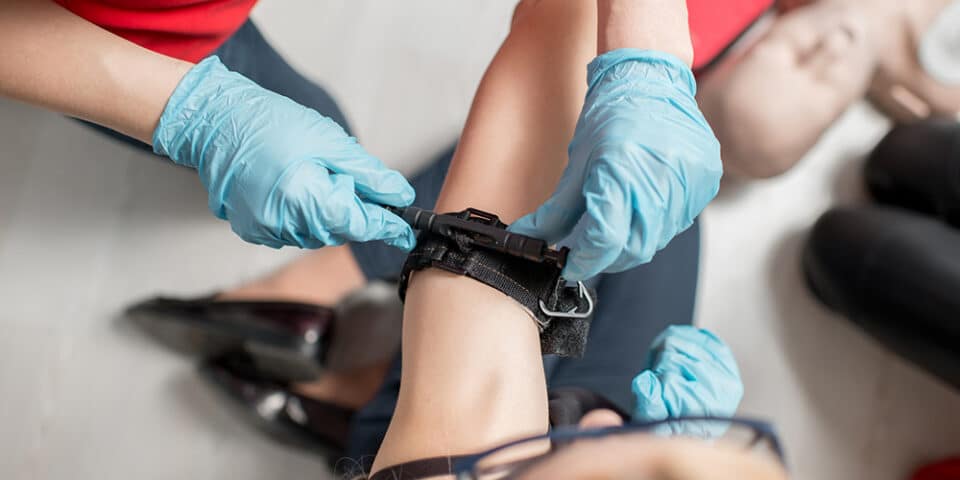How to stop life-threatening bleeding
Life-threatening bleeding can occur anytime, whether it’s caused by a car crash, an accident in your home, or a natural disaster. More importantly, it can happen anywhere – at home, at work, at school, on vacation or on the road. If you know what to do to stop the bleeding, you can potentially save a life.
Injury prevention coordinator Lara Peck, who provides Stop the Bleed training, explained signs of a dangerous bleed and how to stop life-threatening bleeding.
When is bleeding considered life threatening?
Life-threatening bleeding is described as blood that is pooling, spurting or flowing from a wound, or soaking through clothes.
“If blood is pooling and the amount is about half a can of soda, that’s life-threatening bleeding,” Peck said.
What do you do if someone has life-threatening bleeding?
First, call 911.
“Ask someone to call for help while you help the victim,” Peck said. “If you are by yourself, call 911 on speaker phone while helping the victim, and be as specific as you can about your location. Stay on the phone with the operator until they tell you to hang up.”
Then, find the where the person is bleeding. Injuries and bleeding can be covered by clothing or there may be multiple sources of bleeding.
Once you’ve located the wound, use one of the following methods to stop the bleeding:
Method #1: Apply pressure.
Use any type of cloth you have available, such as a T-shirt or gauze, and apply direct pressure to the wound until medical help arrives.
Method #2: Pack the wound.
If the wound is deeper and larger, you can take a T-shirt or piece of cloth or gauze and put that material into the wound. Pack the wound until you feel that the void has been filled with the cloth. Apply pressure and don’t remove that pressure until medical help arrives.
Method #3: Use a tourniquet.
If a first aid kit or bleeding control kit is available, check it for a tourniquet. In public buildings you may find a bleeding control kit in an AED box. A tourniquet is a tool used to stop bleeding by wrapping it around an arm or leg to cut off blood flow from the heart.
If you have a tourniquet, it needs to be placed between the wound and the body. Tighten the tourniquet strap as much as possible. Then turn the windlass (or twist stick) until the bleeding stops.
“It’s going to get challenging because these tourniquets are tight, and that is the purpose,” Peck said. “It’s like you’re sealing off the faucets, pressing all those vessels, veins and arteries against that long bone in the limb. You know the tourniquet is tight enough when the bleeding stops.”
Finally, secure the windlass in the clip, and then note the time, which can be helpful for EMS and the surgeons as they continue to help the victim. Don’t remove or loosen the tourniquet – EMS or trauma team at the hospital will remove it.
Peck also recommended taking a free Stop the Bleed class to practice using a tourniquet.
“These aren’t things people typically use every day, but it is a very quick and easy skill to learn,” she said.
Find a doctor
Whether you’re looking for a primary care physician or need to see a specialist, we’re here to help with experienced, compassionate care near you.
Find a Doctor

